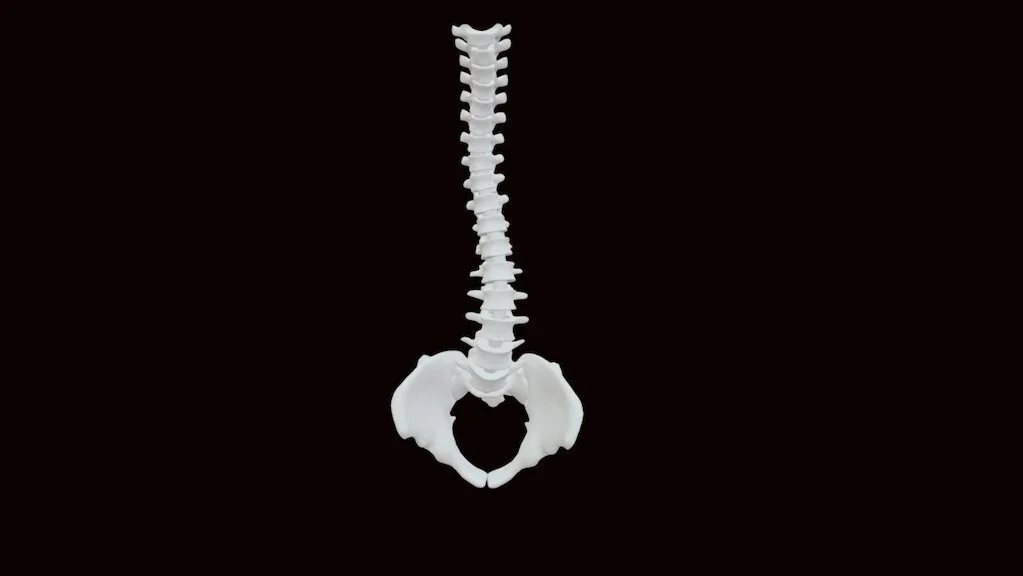Ten Hints to Find a Superbly Comfortable Sitting Posture
You’ve probably spent a lot of hours sitting over many hours of work and leisure, and many of those hours might have been passed feeling uncomfortable, sore or in pain. It doesn’t have to be this way—finding a sitting posture that works for you is completely possible. With the following ten ideas, you’ll learn exactly what you need to know to sit comfortably, whether you’re sitting in front of the screen or sitting in an armchair reading for leisure.
1. It’s about you, not your chair.
Your posture is the most important factor in sitting comfortably, not your chair.
This tip is really important. Before you go out and spend a lot of money on a new chair, you need to understand that, no matter how pricey the chair, if your posture is troubled, the chair won’t resolve your postural issues.
This first tip is different from the others, which are much more practical. This one is about your mindset, so that you can focus on what’s important—your body, your self, your posture, and your postural awareness.
While some chairs actually are better than others, of course, the key factor is how you use your body in the chair. (I will actually cover some chair suggestions later on in this post, but I want to first center your postural awareness and your sensory mechanism as the #1 factor for finding a supremely comfortably, healthy way to sit.)
2. Tune into your body.
In order to change your posture, you have to first be aware of what is happening in your body. Otherwise, you’ll only be guesstimating your physical position (are you slumping or over arched) and the quality of your muscle tone (are you overly tensed or too lax in your postural support) and trying to “fix” your posture. This won’t work in the long run because posture is a living, breathing, moving way of being that relies on your awareness and attention.
Now that you understand why you need to tune into your body, take a moment and observe yourself, ideally in the sitting position. Notice your neck and head, and the position of your head in relation to your neck. Spend some time with your spine—is it overly arched in the lower back? Are your shoulders pinned back? How is your breathing?
Next, I’ll cover what you can do with all of this information you just gleaned from your body/mind.
3. Use your anatomy correctly.
You can put this tip into action right away. Knowing that your spine is one long column, that includes your neck, can change the way you sit and move. This means the top of your spine is not the nape of the neck, but rather at the point where the head meets the top of the spine.
Your spine includes your neck.
Photo Credit: "Spine 1 EOS" by Congenital Heart Defect Modeling Project is licensed under CC BY 4.0
Many people think the former, and, even if you did know the latter, are you using your neck and spine as if they are one and the same? Or do you find yourself jutting your neck forward to get a better look through your dashboard as you drive or to get a little closer to the computer as you squint to see something?
Try it now by moving closer to inspect something in front of you—just notice how you would typically do it, and then allow yourself to move forward as one unit with the spine and torso hinging forward, instead of just the neck.
This is how we are meant to move forward—it’s elegant, efficient and easy as compared to the other way, which is a type of collapse. As you try this, let yourself continue to elongate so you don’t lean your whole torso forward yet lose your length by collapsing instead.
This is just one example of an anatomical misunderstanding that affects your posture; you can check out my digital bundle, Keys to Better Posture, to learn some other tips that will correct your understanding and lead to a much more comfortable way of being in your body. Other commonly misunderstood areas include the shoulders, the hips, and the back.
4. Release your neck muscles.
This tip moves you one step closer to the heart of a comfortable, sustainable sitting posture. Why? Because your neck muscles determine whether your head can move freely, whether your spine is compressed and how your entire postural system is doing.
"Spine Cervical and Upper Thoracics" by planetc1 is licensed under CC BY-SA 2.0
When the neck muscles are overly tensed, as is the case with so many of us, so much of the time, your sitting posture will be heavy and pulled down. So, what to do about it?
Send a message to your neck muscles, particularly the muscles near the back of the head, to release. Allow the release to happen, and repeat it every so often. Notice that when your neck muscles are released instead of overly taut, your head can release off the top of the spine, your spine can grow upwards, your back can widen and lengthen, and your weight can be in lively contact with the chair rather than a “dead drop” kind of contact.
Bottom line? Releasing your neck muscles is crucial to being more upright, naturally, and feeling better.
5. Inhabit your whole back.
One major challenge with sitting is the misconception that good sitting posture involves a straight back. Your spine is naturally slightly curvy and meant to be so. When you try to “sit up straight,” this overly straightens the spine, and requires a lot more effort than is manageable hour after hour.
Instead of trying to straighten your back, allow your lower back to release back if it’s pulling forward, which is a common issue. You can also allow your shoulders to widen away from each other instead of pulling them back and towards each other. These steps will ensure your back is whole and unified so you can have solid support of your torso and your upright posture instead of a forced, artificial straight back that leads to pain, tension and fatigue.
6. Use the support of the chair and the ground.
I mentioned briefly before that you shouldn’t “dead drop” yourself into your chair. Using the support of your chair doesn’t mean you should deposit your weight and leave it there.
Our play with gravity is mobile and lively, so allow your weight to be received in the seat of the chair while you also let your spine release upwards. This allows you to be active in sitting and not immobilized, which leads to fatigue and overly clenched muscles.
Whenever I start to feel like I’m getting heavy and stuck in the chair I’m sitting in, I take a few moments to notice my whole self and renew the exchange with the chair and gravity: weight in, release out. This type of oppositional release feels good, because it leaves you more grounded and more elongated.
7. Regularly move!
Just like sitting itself should be an active, engaged state of being, it’s necessary to actually move if you’re sitting for long periods. You can, of course, get up and move around, but you can also do micro-movements, as I like to call them, in your chair.
Here are some examples of micro-movements: pivot back and forth on your hip joints so your torso moves as one piece forwards and backwards; turn your head slowly to each side, allowing your breathing to blossom as you do so; move your lower leg from your knee joint; and so on!
The point of micromovements is to rejuvenate your postural support. When you make a small movement, you can do so consciously and reawaken your back muscles, your breathing, and your sense of muscular release. This makes micromovements deeply refreshing. It also means you won’t feel inert and heavy.
8. Breathe.
Finding a comfortable posture is like finding flow. Everything moves in harmony and is flexible and alive. Breathing plays a large role in this. Common breathing problems leading to a stagnant sitting posture include bracing the ribs and thoracic spine (the middle part of the spine, from the nape of the neck to the lower back) or collapsing the ribs and chest cavity.
"beautiful-young-woman-doing-yoga-at-home_1301-7486" by singhpankajkumar098 is licensed under CC BY-SA 2.0
How to escape these fates? When breathing, allow your ribs to be moveable; this means with each inbreath, the ribs swing open wide, and with each outbreath, they come together, aiding each part of the breathing cycle.
When your ribs are properly flexible, this means you no longer have to suck air in, puff your chest and shoulders up to breathe in, or collapse down to exhale.
Take a few moments, similar to taking a bit of time for the micromovements, to notice your breathing and gently encourage calm, full cycles of breath. Improving your breathing has an amazing effect on how you feel as well as your posture, since the breathing mechanism connects into the spine, the back and the legs, anatomically speaking.
9. Don’t get sucked forward.
"Keyboarding" by kristinefull is licensed under CC BY-SA 2.0 | This child is a wonderful example of staying back and upright.
This is universally applicable to seated posture; practically everyone does it. When you need to do something in front of you, release back! This sounds very counterintuitive but it’s true.
When you allow your back and spine to release back and up from striving forwards, you have a strong yet open and flexible means of support for yourself. Your back is united and whole, rather than piecemeal.
Another benefit of staying back in your back is that it’s much easier to allow your weight to release into the chair, as it’s centered on top of your pelvis rather than pulling forward or backward out of line with your pelvis. Just imagine an upright stack of rocks—they can’t stay stacked if the rocks start to edge out in all directions.
10. Then choose a chair.
"wooden chair in morning" by Robert Couse-Baker is licensed under CC BY 2.0
OK, you’ve earned it! Now that I’ve covered all the ways you can help your posture to find a comfortable position in the chair, we can go over what chair would be best.
One way to choose a good chair is by elimination; if it has a big dip in the seat or the back of the chair is really curved, it would be better to choose a different chair. Likewise, if it’s very soft and malleable, it can be hard to maintain an upright posture.
I personally like to sit on a simple wooden chair with a flat seat and practically flat back of the chair with a foam wedge on the seat. The wedge helps the thighs to slope downward to the knees and the flat seat means I don’t fall into the seat of the chair. The flat back of the chair makes it easy to lean back and relax while lengthening and widening in my torso.
Bonus Tip:
Let your feet and legs relax! An important area of the body I didn’t cover yet in relation to sitting is the lower body, the legs and feet. Letting your feet relax into the ground means you can also benefit from the contact of the ground with your feet. This translates into less tension in your back, too!
There you have it! If you’ve applied these tips as you read along, you probably already feel lighter and easier in your body. Keep checking in with your body/mind and refreshing these ideas in yourself, so that a comfortable sitting posture is never out of your reach.






